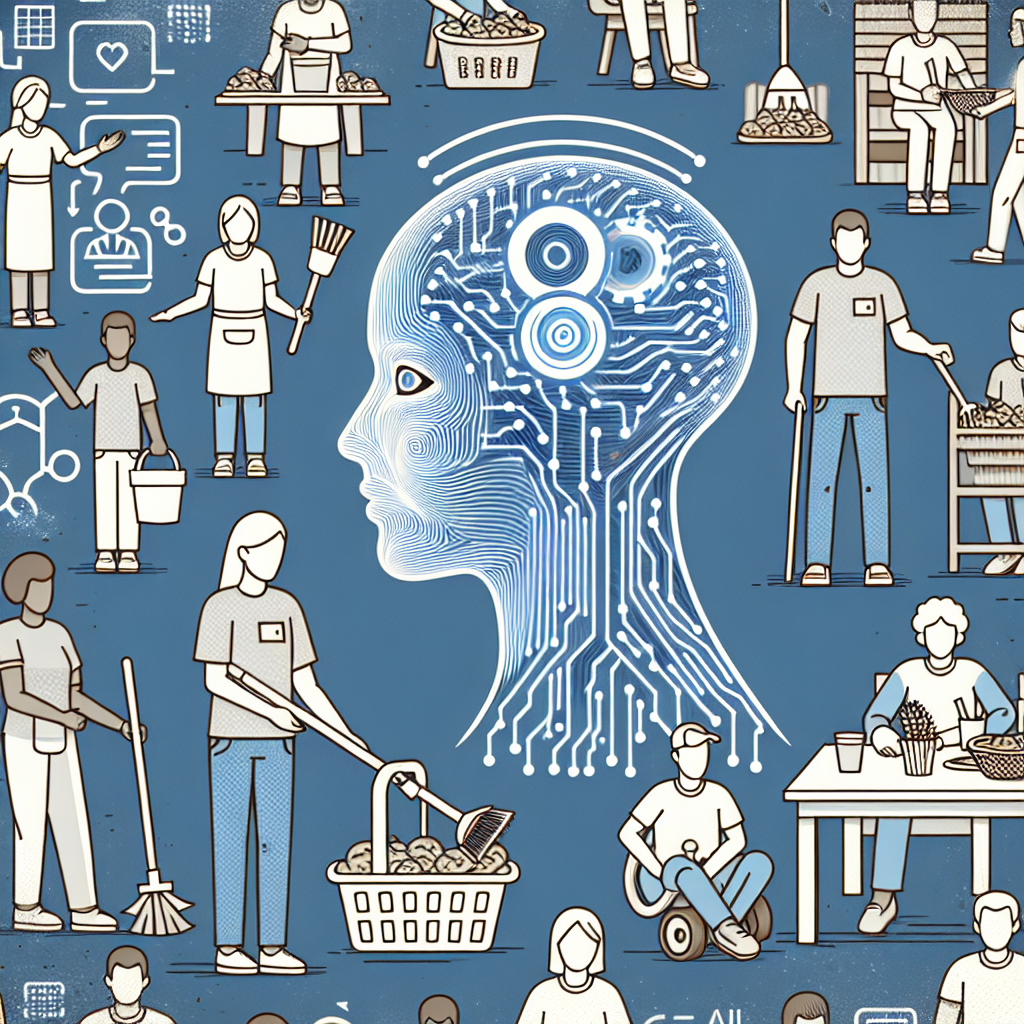The Impact of AI on Volunteer Recruitment and Retention in Nonprofit Organizations
In recent years, artificial intelligence (AI) has been revolutionizing the way organizations operate, including nonprofit organizations. One area where AI is making a significant impact is in volunteer recruitment and retention. Nonprofit organizations rely heavily on volunteers to carry out their missions and achieve their goals, so finding and keeping volunteers is crucial for their success. AI technology is helping nonprofits streamline their volunteer recruitment processes, identify potential volunteers more efficiently, and retain volunteers by providing a more personalized and engaging experience.
Recruitment:
AI is transforming the way nonprofit organizations recruit volunteers by making the process faster, more targeted, and more effective. AI-powered recruitment tools can analyze large amounts of data to identify potential volunteers who are a good fit for the organization based on their skills, interests, and availability. These tools can also help nonprofits reach out to a wider pool of potential volunteers by using algorithms to target specific demographics or communities that may be interested in volunteering.
One way AI is being used in volunteer recruitment is through chatbots. Chatbots are AI-powered programs that can interact with potential volunteers in real-time, answering their questions, providing information about the organization and its volunteer opportunities, and even helping them sign up to volunteer. Chatbots can provide a personalized and engaging experience for potential volunteers, making it more likely that they will follow through and commit to volunteering.
Another way AI is being used in volunteer recruitment is through predictive analytics. Predictive analytics uses algorithms to analyze data and predict future outcomes, such as which volunteers are most likely to stay engaged with the organization and which volunteers are at risk of dropping out. Nonprofits can use this information to tailor their recruitment efforts to target volunteers who are more likely to stay committed in the long run, ultimately improving volunteer retention rates.
Retention:
Once volunteers have been recruited, AI can also help nonprofits retain them by providing a more personalized and engaging volunteer experience. AI-powered tools can analyze volunteer data to identify patterns and trends in volunteer behavior, such as how often volunteers participate in activities, what types of activities they prefer, and what motivates them to volunteer. This information can help nonprofits tailor their volunteer programs to better meet the needs and preferences of their volunteers, leading to higher levels of engagement and satisfaction.
AI can also help nonprofits communicate more effectively with volunteers. For example, AI-powered email marketing tools can analyze volunteer data to send personalized messages to volunteers, such as reminders about upcoming volunteer opportunities or thank you notes for their hard work. By communicating with volunteers in a more personalized and timely manner, nonprofits can build stronger relationships with their volunteers and make them feel valued and appreciated, leading to higher levels of volunteer retention.
FAQs:
Q: How can AI help nonprofit organizations recruit volunteers more effectively?
A: AI-powered recruitment tools can analyze large amounts of data to identify potential volunteers who are a good fit for the organization based on their skills, interests, and availability. AI can also help nonprofits reach out to a wider pool of potential volunteers by using algorithms to target specific demographics or communities that may be interested in volunteering.
Q: How can AI help nonprofit organizations retain volunteers?
A: AI can help nonprofits retain volunteers by providing a more personalized and engaging volunteer experience. AI-powered tools can analyze volunteer data to identify patterns and trends in volunteer behavior, such as how often volunteers participate in activities, what types of activities they prefer, and what motivates them to volunteer. This information can help nonprofits tailor their volunteer programs to better meet the needs and preferences of their volunteers, leading to higher levels of engagement and satisfaction.
Q: What are some examples of AI-powered tools that nonprofit organizations can use for volunteer recruitment and retention?
A: Some examples of AI-powered tools that nonprofit organizations can use for volunteer recruitment and retention include chatbots, predictive analytics, and email marketing tools. Chatbots can interact with potential volunteers in real-time, answering their questions and providing information about volunteer opportunities. Predictive analytics can analyze volunteer data to predict future outcomes and tailor recruitment efforts to target volunteers who are more likely to stay committed. Email marketing tools can analyze volunteer data to send personalized messages to volunteers, such as reminders about upcoming volunteer opportunities or thank you notes for their hard work.
In conclusion, AI is revolutionizing the way nonprofit organizations recruit and retain volunteers by providing more personalized and engaging experiences for volunteers. By leveraging AI technology, nonprofits can streamline their volunteer recruitment processes, identify potential volunteers more efficiently, and retain volunteers by providing a more personalized and engaging experience. As AI continues to evolve, nonprofit organizations will have even more tools at their disposal to attract and retain volunteers, ultimately helping them achieve their missions and make a positive impact in their communities.

